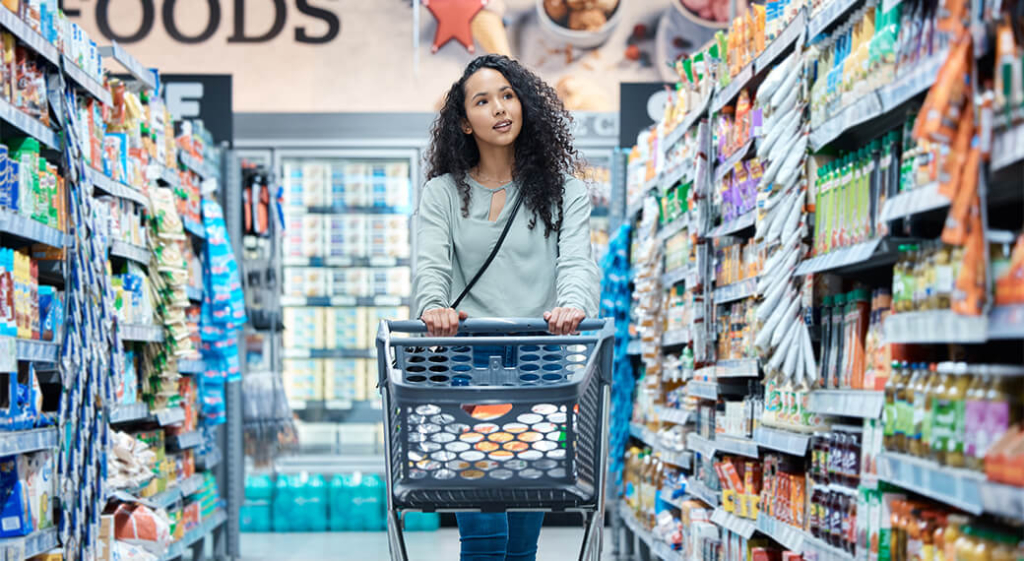In-store signage is a powerful, yet often underestimated, tool for influencing consumer decision-making and purchasing behavior. In this article, we look at one effect signage has on customer decision-making called “priming.”
Attention and Information Processing
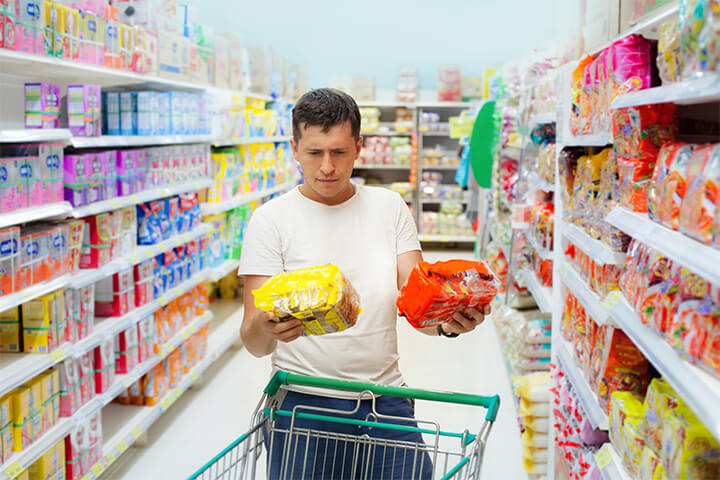
Grocery stores are information-rich environments where the goal of signage is to capture shopper attention and direct their information processing. In fact, studies have demonstrated how strategically placed signs can prime shoppers towards specific products — even if those products are not explicitly promoted.
What Is Priming?
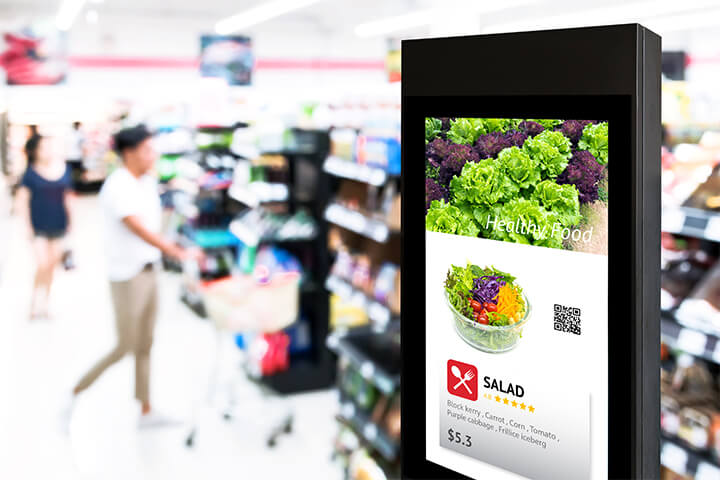
Priming, in this context, means that subtle cues and suggestions influence a shopper’s choices without them realizing it. This effect highlights the ability of signage to guide the initial stages of decision-making, particularly for shoppers with limited prior knowledge or brand loyalty.
How Does Priming Work?
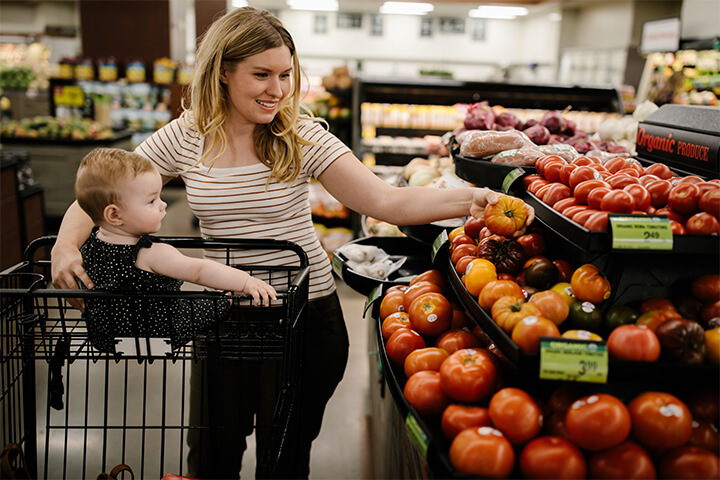
Priming works by activating pre-existing or implicit associations, which are mental connections formed through past experiences and cultural conditioning. These associations operate below the level of conscious awareness, subtly influencing our decisions without us realizing it.
A strategically placed sign highlighting “healthy recipes” near the produce section, for instance, primes shoppers to think about health and wellness. Even a glance at the words “healthy recipes” can subtly influence their product choices, leading them to pick up more fruits and vegetables even if they hadn’t planned to do so beforehand.
The Naïve Advantage

As we mentioned, priming works best on shoppers with limited prior knowledge or brand loyalty because their decision-making landscape is less cluttered, allowing priming cues to exert a stronger influence. Existing neural networks are less “busy,” facilitating the activation and propagation of primed associations.
Functional magnetic resonance imaging (fMRI) studies support this notion. For individuals with limited brand knowledge, research has demonstrated that exposure to brand logos primed specific areas of the brain associated with brand evaluation. Conversely, for brand-loyal consumers, priming activated reward processing regions, suggesting a pre-existing positive association rather than a novel influence.
How to Use Priming Signage
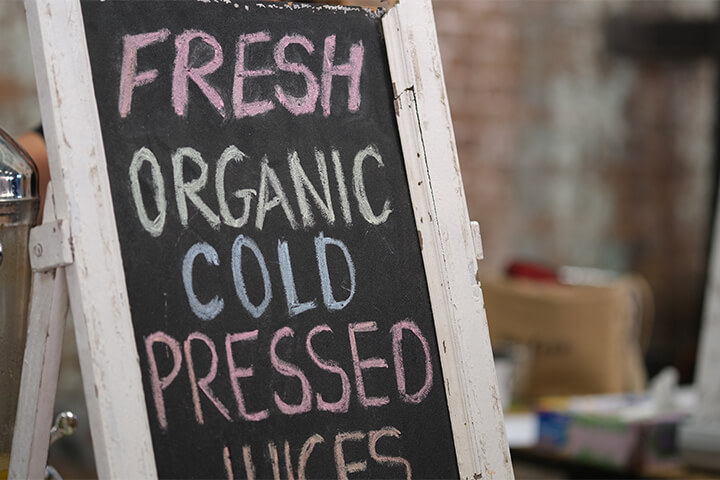
Grocery store operators can use signage to nudge shopper behavior using the actionable techniques described below.
Spatial Proximity & the Halo Effect
The halo effect, a well-documented cognitive bias describes how positive attributes associated with one object influence our perception of another. In a grocery store context, this translates to strategically associating a well-regarded product (the “halo source”) with another product (the “target”). Shoppers, taking a mental shortcut, unconsciously transfer the positive perception of the halo source to the target, increasing its appeal.
Research also demonstrates the power of spatial proximity. For example, placing signage that promotes organic produce (halo source) near conventional produce (target) leads some shoppers to perceive the conventional options as healthier by association.
Scenario #1: Healthy by Association
Building on these principles, placing informational signs near, but not directly promoting, a target product can increase its selection. Signs highlighting healthy recipes that feature a specific vegetable placed strategically next to a less-noticed vegetable variety can subconsciously nudge shoppers towards the unfamiliar option, creating a mental association between the product and the desired outcome (a healthier lifestyle).
Scenario #2: Sell a Lifestyle
Another example would be to place a sign near a sparkling water display that evokes a sense of luxury and sophistication. The sign could feature a minimalist design with a tagline like “Elevate Your Everyday.” It could also include a subtle image of a spa or a serene natural setting.
In this case, the imagery and messaging can increase the perceived value of sparkling water by tapping into emotions like relaxation and tranquility. This signage creates a stronger emotional connection with the product because it features an aspirational state of living — luxury and refinement. Positioning sparkling water as a premium lifestyle product can drive sales of this higher-margin item.
Scenario #3: Fresh by Design
Furthermore, a different way to apply these principles to signage would be, for example, to display signage showcasing fresh, vibrant produce (halo source) near less visually appealing frozen fruits and vegetables (target). Ultimately, this connection enhances the frozen items’ perceived freshness.
Scenario #4: The Gourmet Glow
The halo effect also primes customers when positive attributes of a halo source are displayed on signage near the target. For instance, signage promoting award-winning cheeses (halo source) displayed near crackers or bread (target) imbues the target with an air of sophistication, increasing its perceived value.
Prime Your Profits

Grocery store signage can prime customers towards specific products and behaviors. Utilizing techniques like the halo effect and spatial proximity, retailers can subtly influence shoppers’ decision-making processes to move more target products and boost sales.

